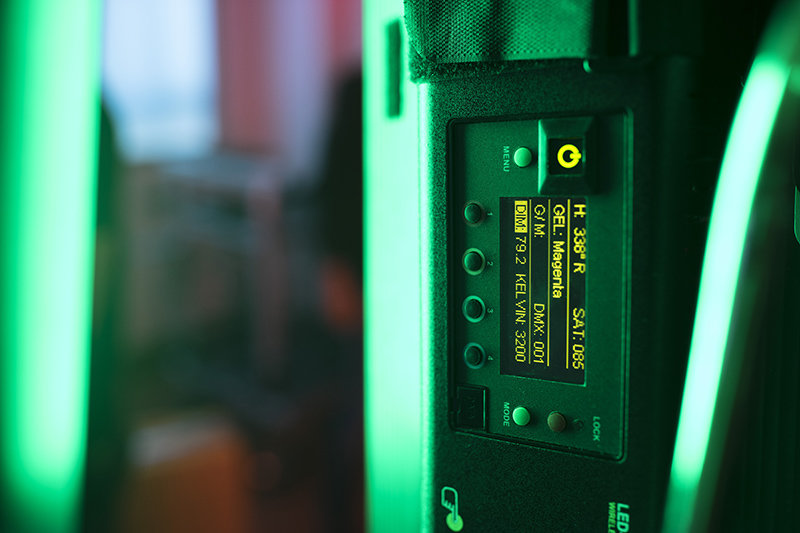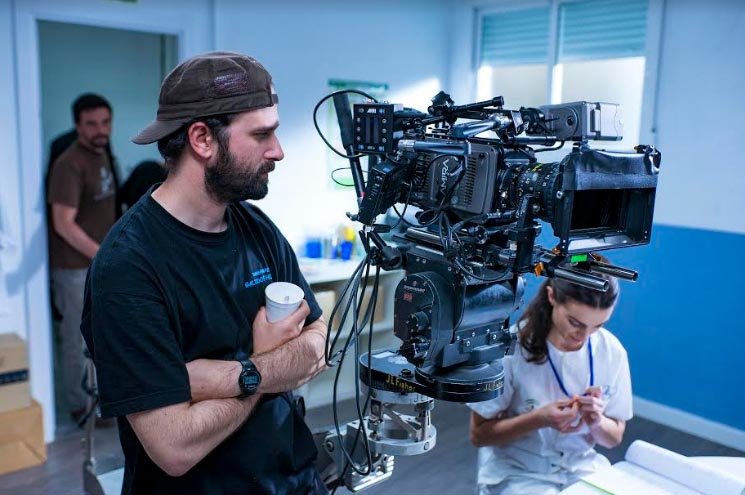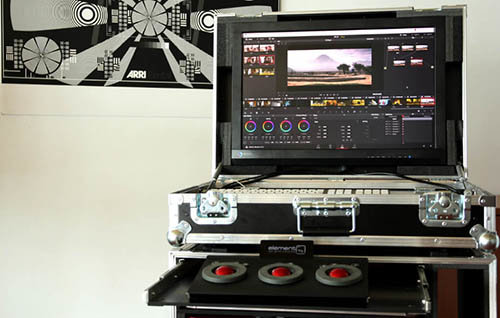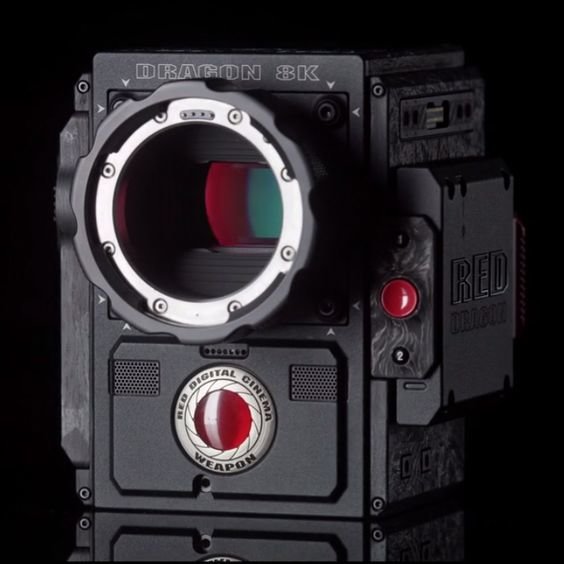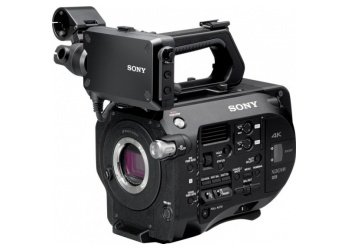-
Posts
17 -
Joined
-
Last visited
Profile Information
-
Occupation
Cinematographer
-
Location
Madrid
-
My Gear
ARRI , RED, Sony
-
Specialties
ARRI Lenses
ARRI Cameras
Contact Methods
-
Website URL
http://www.camaleonrental.com/
Recent Profile Visitors
6,437 profile views
-
SequenceShoot with Dolly Fisher: The great Orson Welles used to say :”A long-playing full shot is what always separates the men from the boys. Anybody can make movies with a pair of scissors and a two-inch lens.” And as usual, the master was totally right. Thanks to movies such as “Children of men”, “Gravity” or “Birdman” (and a lot more) the sequence shots are once again very popular and with the help of digital cinema that removed several limitations we previously had (such for instance the time limitation of 10 minutes due to the size of 35mm film magazines), this kind of shot has become RELATIVELY easier (or at least possible even for small and medium-sized productions). The capital letters are on purpose, since shooting a one-shot sequence is still an extremely complicated thing to do, the longer the harder. Last week, a friend and DoP offered me the chance to pull focus on a short movie which would be shot on a single shot of approximately 1 minutes length, in a studio with 9 actors. The camera would be the whole time on a J.L. Fisher dolly with rubber wheels to not disturb the actors with tracks and... More info here. Fabio Giolitti - Focus Puller.
-

Update "Color Menu" Kino Flo Select LED DMX
Rafael Monta posted a topic in Lighting for Film & Video
Update "Color Menu" Kino Flo Select LED DMX Kino Flo Lighting Systems incorpora una actualización al controlador balastro electrónico de las pantallas Kino Flo Select LED DMX. Con esta nueva actualización se incorpora un nuevo menú en el controlador, denominado “Menú de color”. Este incluye 3 canales más (Control de Geles, Ángulo HUE o Ángulo de tono y canal de Saturación). Este complemento nos permite poseer un control casi total sobre el color: - El canal “Geles” dispone de más de 100 gelatinas predeterminadas (cada uno de un color y una saturación específica), pudiendo prescindir de los filtros de gelatina externos. - El canal “Ángulo de Tono” o “Ángulo Hue” nos ofrece la posibilidad de utilizar cualquier grado de color dentro de los 360° disponibles en el Arco Iris. - El canal “Saturación” nos permitirá escoger la intensidad de color de un matiz específico. Además, se amplía el rango de temperatura de color, de 2500K a 9900K. Más información aquí. -
Sequenceshots The great Orson Welles used to say :”A long-playing full shot is what always separates the men from the boys. Anybody can make movies with a pair of scissors and a two-inch lens.” And as usual, the master was totally right. Thanks to movies such as “Children of men”, “Gravity” or “Birdman” (and a lot more) the sequence shots are once again very popular and with the help of digital cinema that removed several limitations we previously had (such for instance the time limitation of 10 minutes due to the size of 35mm film magazines), this kind of shot has become RELATIVELY easier (or at least possible even for small and medium-sized productions). The capital letters are on purpose, since shooting a one-shot sequence is still an extremely complicated thing to do, the longer the harder... More info here.
-
Minimal Camera gear for independent productions Not long ago I wrapped an independent feature that was shot in Morocco with a DoP I had already worked for on two more movies. From the very first contact with the production company, it was quite clear that it was a low budget movie, therefore it was mandatory to squeeze the most out of every single euro in order to make the shooting possible according to the schedule, without the need to do extra hours and such. As usual, I advised the director of photography on the gear list, try to get everything I considered necessary and making a separate list of devices and accessories that could be considered dispensable, hoping that finally the production company would come to an agreement with the rental house. Since the prep time had been very short, there was a lot of information about the shooting I wasn’t aware of, and now that I came back I would like to share what I’ve learn from this experience. Speaking about gear and accessories, I realized that there are some of them that are wrongly considered “fancy”, while it’s precisely in low budget productions when they become more handy and/or essential. Here you have my top 3... More info here Camaleon Cinema Services S.L - Fabio Giolitti.
-
- camera
- productions
-
(and 4 more)
Tagged with:
-
The focus puller workout First of all, I would like to say that is a camera system, like all the Arri models both digital and 35mm, with which the assistant cameraman feels very comfortable, since is easy to use, solid and reliable even in the most extreme shooting situation (here I have to be honest and tell that I din't work with it in very extreme conditions, but I know people that did and they got no trouble at all) As I was saying, it is often considered the "Scarlet" of Arri, or his solution for low budget productions. And even if I'm not going to say that the Amira is as good as... More information here.
-
Dit, the proffesion | Camaleon Cinema Services Camaleon Rental blog we are going to speak about the role of a DIT. The first question is to define what a DIT is as well as determine if this position belongs to the camera crew or to the postproduction crew. The answer would be that he is kind of a liaison between both department, even though if we have to make a choice we would say that he is part of the camera department since he works on set. The DIT profession (technical image technician), arrives with the appearance of the first high definition cameras and then with the digital cinema cameras. At this point we should remember that when these cameras arrived both directors of photography and assistant cameramen came from working for many years with film cameras. So after the arrival of such new and different gear, it was necessary the inclusion of a new figure to the camera crew in order to advise the DoP on how to squeeze... More info here.
-
DIT, The profession Today in the Camaleon Rental blog we are going to speak about the role of a DIT. The first question is to define what a DIT is as well as determine if this position belongs to the camera crew or to the postproduction crew. The answer would be that he is kind of a liaison between both department, even though if we have to make a choice we would say that he is part of the camera department since he works on set. The DIT profession (technical image technician), arrives with the appearance of the first high definition cameras and then with the digital cinema cameras. At this point we should remember that when these cameras arrived both directors of photography and assistant cameramen came from working for many years with film cameras. So after the arrival of such new and different gear, it was necessary the inclusion of a new figure to the camera crew in order to advise the DoP on how to squeeze... More Information here
-
RED WEAPON WITH HAWK C-SERIES: THE NEW MEETS THE VINTAGE. This week I would like to share one of my last experiences on set where I got the chance to use a cinema camera and a set of lenses for the first time. On one side, and I don’t exactly know why, it was an incredible long time since I used for the last time a RED camera and I didn’t had tried yet the “new” (even though there is already a newer model out there called Raven) 6K Weapon; plus, I did had seen the Hawk C-Series, but just in rental houses promotional meetings, and we all know that an actual set is a totally different environment. THE CAMERA Truth is that from quiet a few points of view I was gratefully surprised by the camera, since comparing to the RED Dragon it features severals tools that, if you want my two cents, are a consistent improvement, both in the operation of the camera as a 1AC and the performance of the camera itself. First of all... More information: http://www.camaleonrental.com/gb/blog/red-weapon-with-hawk-c-series-the-new-meets-the-vintage-n14
-
5 questions you should ask yourself before shooting with vintage anamorphic Lately I had the chance to shoot a lot with vintage anamorphic lenses and I sometime had a pretty hard time dealing with them, not only focus wise but really in general. And I have the feeling that sometime directors or Dop forget that everything is a tool and every job have a specific "tool" that fits best its needs... Fabio Giolitti - Focu Puller
-
Testing Kowa Prominar
-
Mapping Lens - ARRI WCU-4 I don’t know what you guys think on this matter, but if you want my two cents it is crucial to be fast when you change the lens while using remote control systems, in situations such as steadicam, cranes or simply hand held when the cam operator wants to be more free than with a standard follow focus. Previously I used to prepare pre-marked rings during camera prep and switch them while the motor were calibrating, but I always dreamed about a more precise and reliable system. A couple of months ago, a local distributor of ARRI products hosted a workshop on how to map lenses on the new WCU4, but sadly I wasn’t in town so I couldn’t attend... Fabio Giolitti - Focus Puller
-
Arri WCU-4 & UMC-4: lens Mapping I don’t know what you guys think on this matter, but if you want my two cents it is crucial to be fast when you change the lens while using remote control systems, in situations such as steadicam, cranes or simply hand held when the cam operator wants to be more free than with a standard follow focus... Fabio Giolitti - Focus Puller
-
-
-
Changing it all, so nothing change - Arri Alexa SXT. I know the title may sound a little dramatic, but I’m convinced that this was the philosophy behind the big change ARRI is going to make. Of course there were improvements to make, but there was also the big satisfaction of the film community with the previous models, so the challenge was to make happen important upgrades without changing the essence of the camera itself.




